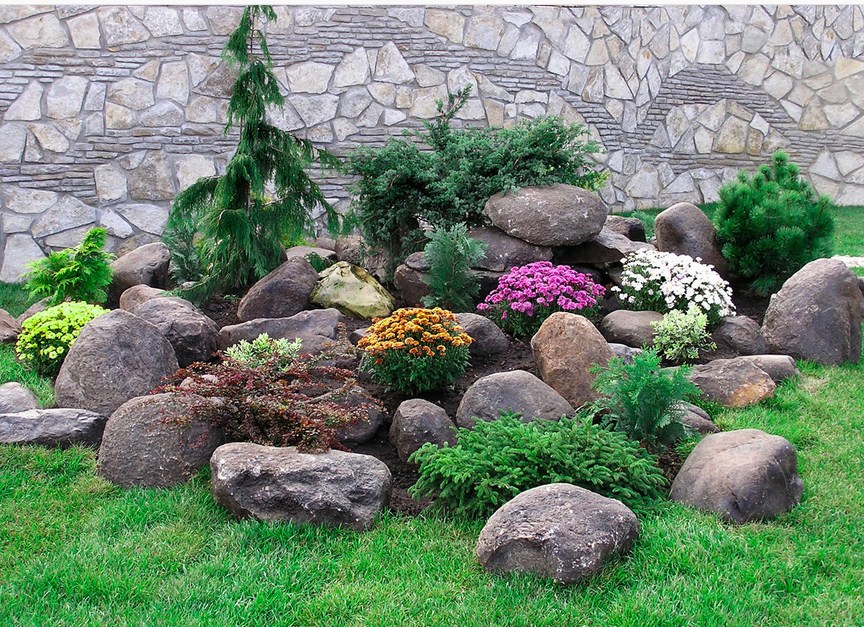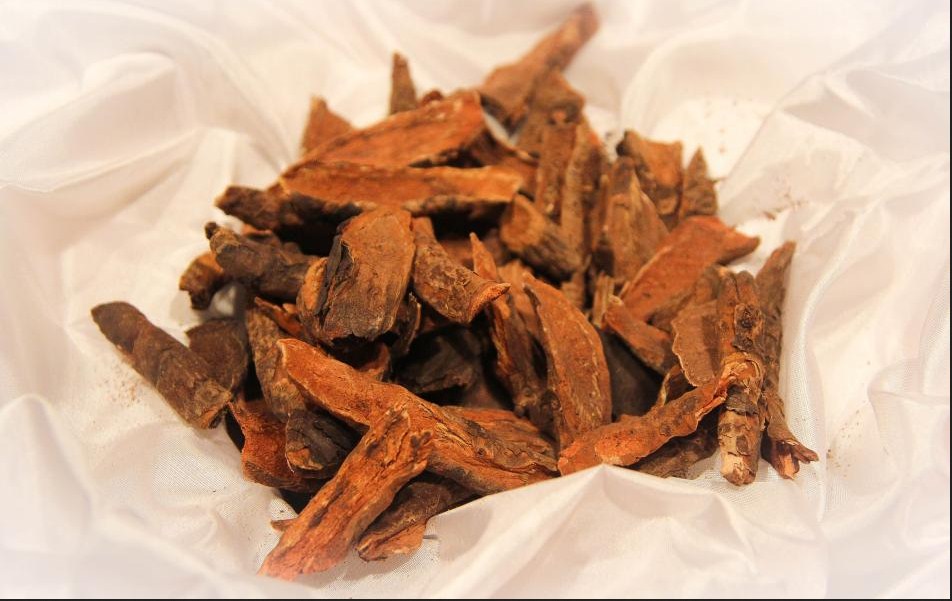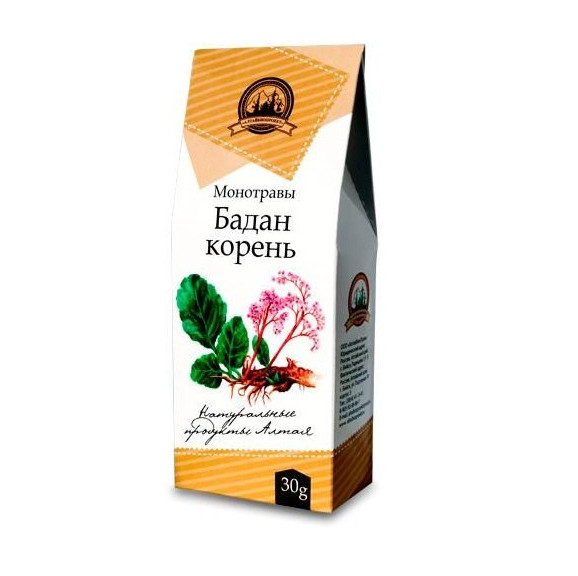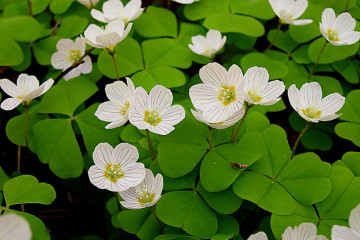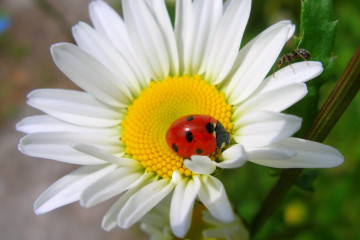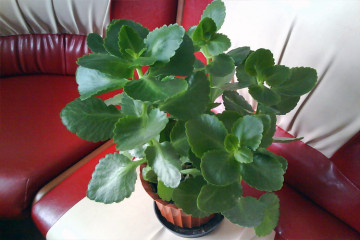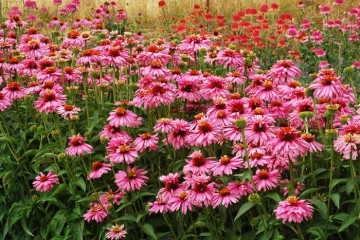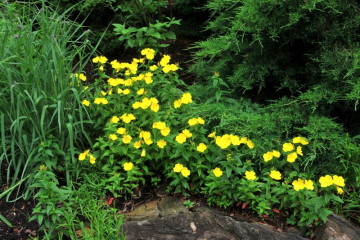Big-leaved badan (bergenia crassifolia)
Content:
Badan thick-leaved, or bergenia (the Latin name of the species is bergenia crassifolia) is one of the most famous species of the Saxifrage family, which is valued not only as a medicinal plant with a wide range of medicinal properties, but also as a rather unpretentious and beautiful ornamental culture. About what kind of badan has a description, where it grows, how it is grown in the conditions of a personal plot, and also what healing properties it has, will be described in this article.
Description and distribution area
Badan thick-leaved is a herb with a perennial cycle. It has a creeping, powerful rhizome reaching a length of several meters, up to 3-3.5 cm thick, ending in a vertical root, thick pale red stems up to 0.5 m high, large oval leaves collected in basal rosettes, five-membered small in size flowers that form at the tops of the stems.
In the wild, badan grows in Siberia, Kazakhstan, Primorsky Krai, northern regions of Mongolia, China, and also in Korea.
This small herbaceous shrub grows on mountain slopes, stone taluses. Withstands long-term shade, thrives on acidic high peat bogs. Very picky about soil moisture.
Planting and leaving
For planting this wild plant, partially shaded areas with loose fertile and well-moistened soil, deep groundwater are used.
Plant care includes:
- Spring removal of frost-damaged and dead leaves;
- Two dressings - one in early spring after removing frost-damaged foliage, the second - at the end of flowering;
- 3x plentiful watering - at the beginning of flowering, 1.5-2 weeks after its completion, until the end of the summer season in the absence of rain.
Also, to retain moisture and control weeds, the root zone is mulched with peat, foliage, sawdust.
Propagation by cuttings and seeds
This perennial plant is propagated in two main ways: seeds and cuttings.
When propagated by seeds at the end of February, they are sown in small containers with moistened soil to a depth of 5-6 mm, placed in a refrigerator or taken out into the street. In the first decade of May, containers are brought into a room with a temperature of 18-200C and high humidity, where after 3 weeks they germinate. The emerging seedlings are often watered, loosened and thinned out, leaving a distance of at least 5 cm between the senses. The seedlings are planted in open ground at the beginning of summer.
For propagation by cuttings, a part of the rhizome with a basal rosette is cut off from a well-developed plant, planted in a previously prepared trench in a new area, sprinkled with soil, carefully compacting it. Cuttings are made after the plant has faded.
Plant cultivation
Badan is cultivated to obtain medicinal raw materials, as well as an unpretentious decorative culture, widely used in various flower arrangements and "alpine hills".
In addition to the wild-growing badan, breeders have now obtained many varieties of a hybrid variety of this plant. The most popular among them are Rosi Klose, Beethoven, Andrea, Morgenrote, Abendglocken. Moreover, each variety, in contrast to the wild-growing plant, has a longer flowering, pleasant aroma, bright color of inflorescences.
Economic value and application
For the preparation of medicines, rhizomes and leaves of badan are used.
How to collect, procure and store raw materials
Rhizomes are harvested in early summer. To do this, they are dug out of the ground, the rosettes with leaves are removed, washed under cold running water and cut into 20-30 cm pieces. The prepared rhizomes are dried in a well-ventilated dry and shaded room. Dried and brown leaves are harvested in early spring after they emerge from the snow.
The collected and dried medicinal raw materials are stored in a dry and cool room, out of the reach of children.
The chemical composition of the plant
The leaves and rhizomes contain essential oils, tannins, mono, - and disaccharides, trace elements, glycosides, ascorbic acid (vitamin C), phytoncides, starch.
Application in official and traditional medicine
Application of leaves and roots of thick-leaved bergenia
The leaves and roots of this plant are used to improve blood clotting, relieve inflammation, disinfect and improve wound healing, lower blood pressure, and strengthen the walls of blood vessels. Also, medicines from bergenia strengthen the immune system, have a pronounced anti-stress effect.
Collection of a cold
The collection from the common cold is prepared by mixing one tablespoon of badan leaves and elecampane with two tablespoons of St. John's wort. One tablespoon of the resulting mixture is poured into 200 ml of hot water and boiled for 20 minutes over low heat. The finished broth is taken 3 times a day before meals, 50-60 ml.
Gastrointestinal diseases
Traditional medicines are used for such diseases and disorders of the gastrointestinal tract as diarrhea, constipation, flatulence, gastritis, ulcers, food poisoning.
Contraindications and side effects
The main contraindications for the use of drugs from badan include hypotension, tachycardia, increased blood clotting, a predisposition to frequent constipation, an allergic reaction to the substances that make up the plant.
Also, it is not recommended to take medicines based on this plant for pregnant and lactating women.
Application in other fields
The harvested raw material of thick-leaved bergenia is used as a tanning agent in the leather industry, arbutin contained in the leaves has recently been widely used in photography. Various cosmetics are also produced on the basis of badan: finely ground powder from dry rhizomes is used to treat oily seborrhea of the skin of the face and head, as well as a whitening, narrowing pores and eliminating acne cosmetic product.
Traditional medicine recipes
In folk medicine, the following medicines are prepared from badan:
- Decoction of rhizomes - 2 tablespoons of crushed rhizomes are poured with 200 ml of hot water and heated to a boil for 25-30 minutes in a water bath. Then the broth is allowed to cool to room temperature and diluted with cold boiled water to its original volume.
- Tea - 2 tablespoons of dry leaves are poured with a glass of boiling water, infused for 20 minutes. Sugar or honey is added to ready-made and slightly cooled tea.
- A decoction of leaves - 2 tablespoons of chopped leaves are poured with a glass of boiling water and boiled in a water bath for 25 minutes. The finished broth is cooled to room temperature.
Thus, having studied the description, features of growing and using this plant, you can not only decorate your flower beds and flower arrangements with it, but also, taking into account this or that contraindication, apply it to treat a certain disease.
Video

